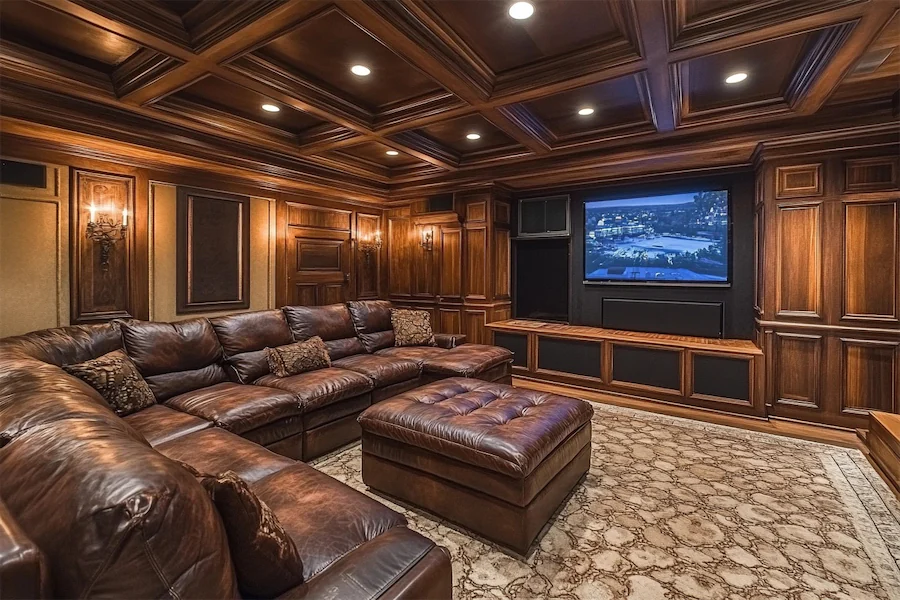Designing a Prairie-style entertainment room involves creating a harmonious space that reflects the architectural principles of the Prairie School movement, emphasizing natural materials, horizontal lines, and a seamless connection to the outdoors. This article explores the history, key features, applications, and considerations for crafting a Prairie-style entertainment room.
Introduction to Prairie-Style Entertainment Rooms
Prairie-style architecture, pioneered by Frank Lloyd Wright in the early 20th century, focuses on integrating structures with their natural surroundings. An entertainment room designed in this style embodies open layouts, earthy color palettes, and handcrafted details, providing a warm and inviting space for relaxation and social gatherings.
History and Origins of Prairie Style
The Prairie School movement emerged in the American Midwest as a reaction against the ornate Victorian architecture of the time. Architects like Frank Lloyd Wright sought to create designs that were uniquely American, characterized by low-pitched roofs, overhanging eaves, and open floor plans that encouraged family interaction and a connection to nature.
Key Features of Prairie-Style Entertainment Rooms
- Horizontal Lines: Emphasize horizontal elements through furniture placement, moldings, and architectural details to reflect the expansive Midwestern landscape.
- Natural Materials: Incorporate wood, stone, and brick to bring warmth and texture, staying true to the Prairie emphasis on organic materials.
- Earthy Color Palette: Utilize shades of brown, rust, green, and ochre to create a grounded and cohesive aesthetic.
- Built-In Furnishings: Include built-in cabinetry and shelving to enhance functionality and maintain clean lines, a hallmark of Prairie design.
- Art Glass Accents: Incorporate stained glass or art glass windows and light fixtures featuring geometric patterns to add visual interest and authenticity.
Applications of Prairie Style in Entertainment Rooms
- Open Floor Plan: Design the entertainment room with an open layout to facilitate easy movement and social interaction, reflecting the Prairie style’s emphasis on spaciousness.
- Fireplace as Focal Point: Feature a central fireplace made of natural stone or brick to serve as a gathering spot and enhance the room’s warmth.
- Integrated Technology: Seamlessly incorporate modern entertainment systems within custom-built cabinetry to preserve the room’s aesthetic integrity.
- Connection to Outdoors: Include large windows or French doors that open to outdoor spaces, blurring the line between indoors and nature.
Considerations When Designing a Prairie-Style Entertainment Room
- Consistency: Ensure that design elements align with the overall architectural style of the home to create a unified look.
- Quality Craftsmanship: Invest in well-crafted furniture and finishes that reflect the attention to detail inherent in Prairie design.
- Lighting: Incorporate a mix of ambient, task, and accent lighting, including fixtures with geometric designs, to enhance the room’s functionality and ambiance.
- Personal Touches: Add personal artifacts and artwork that complement the Prairie aesthetic to make the space uniquely yours.
Conclusion
A Prairie-style entertainment room combines historical architectural principles with modern comforts, creating a space that is both functional and aesthetically pleasing. By focusing on natural materials, horizontal lines, and a strong connection to the outdoors, you can design an entertainment room that embodies the timeless elegance of the Prairie style.
